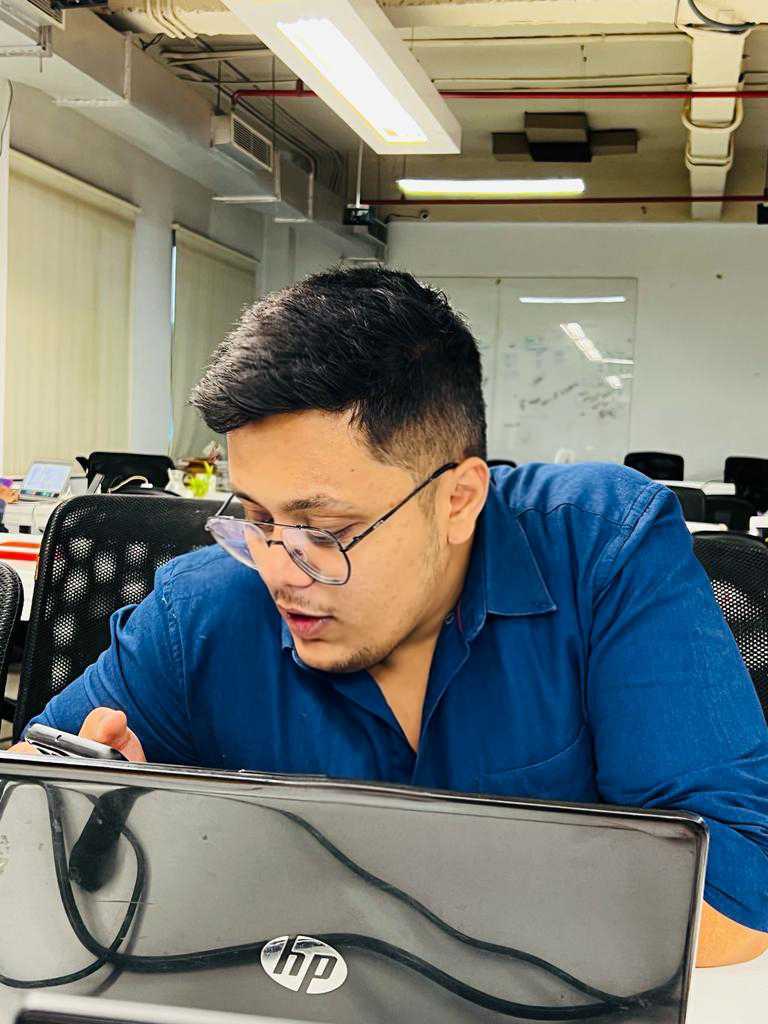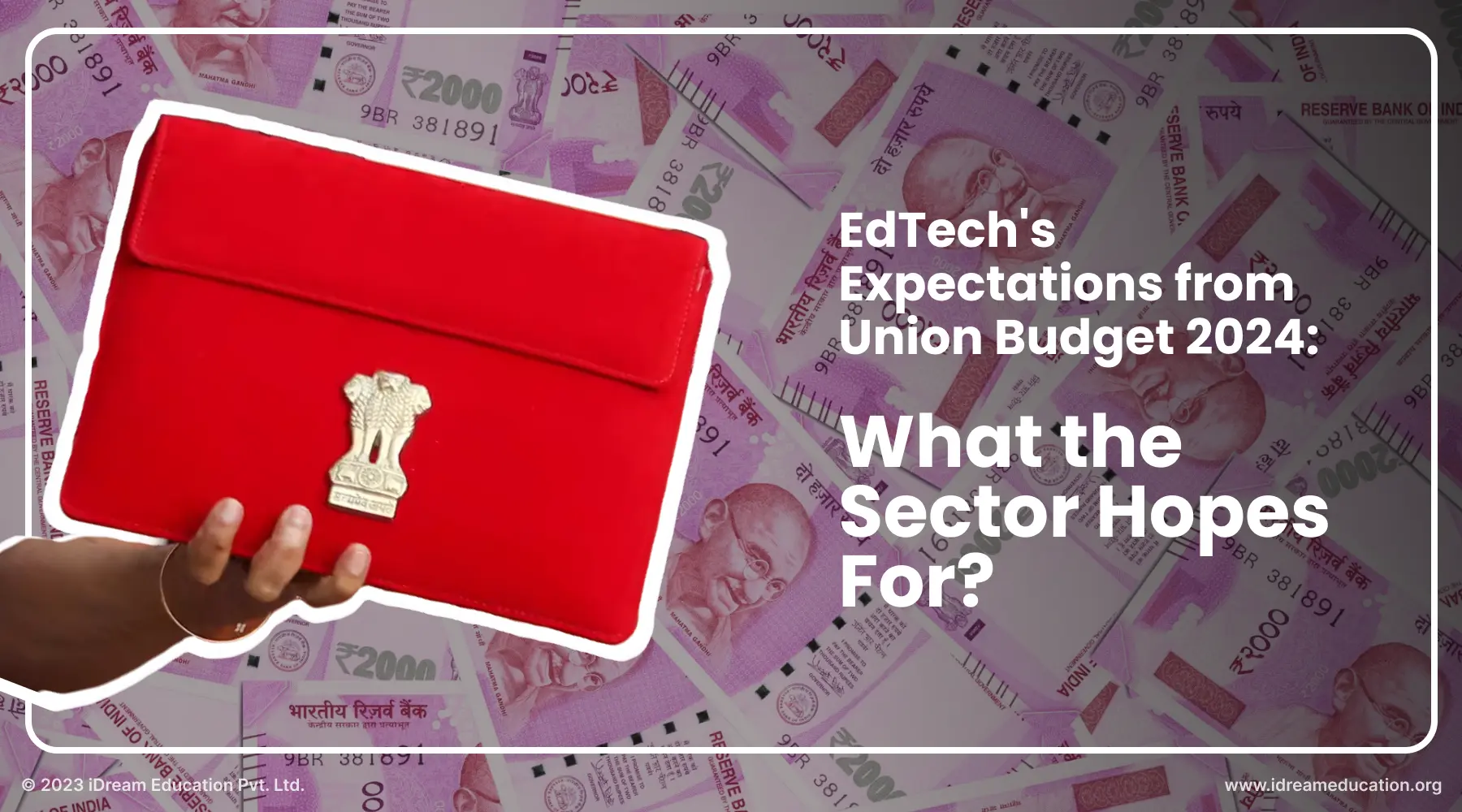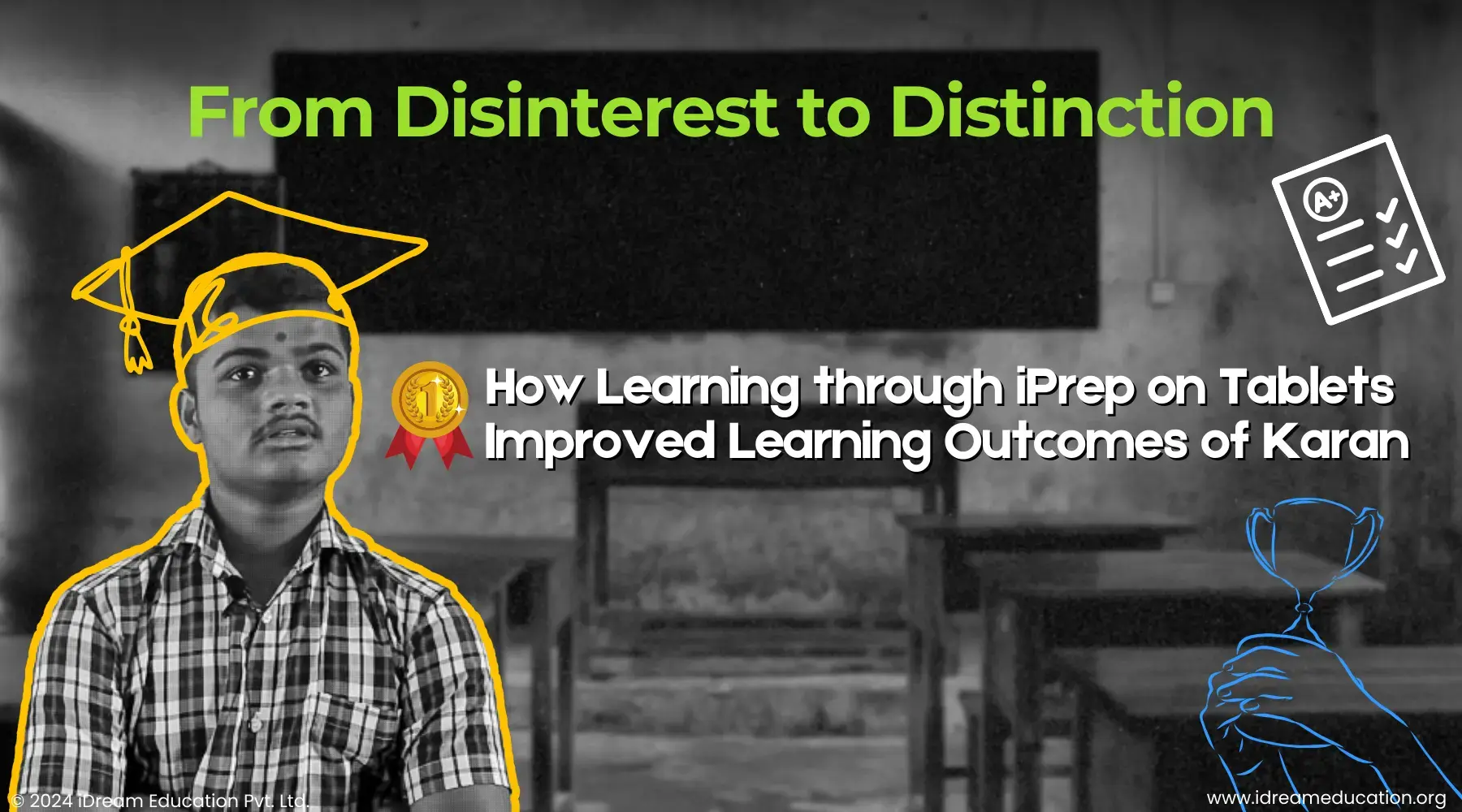Understanding Digital Education – Learning In The 21st Century
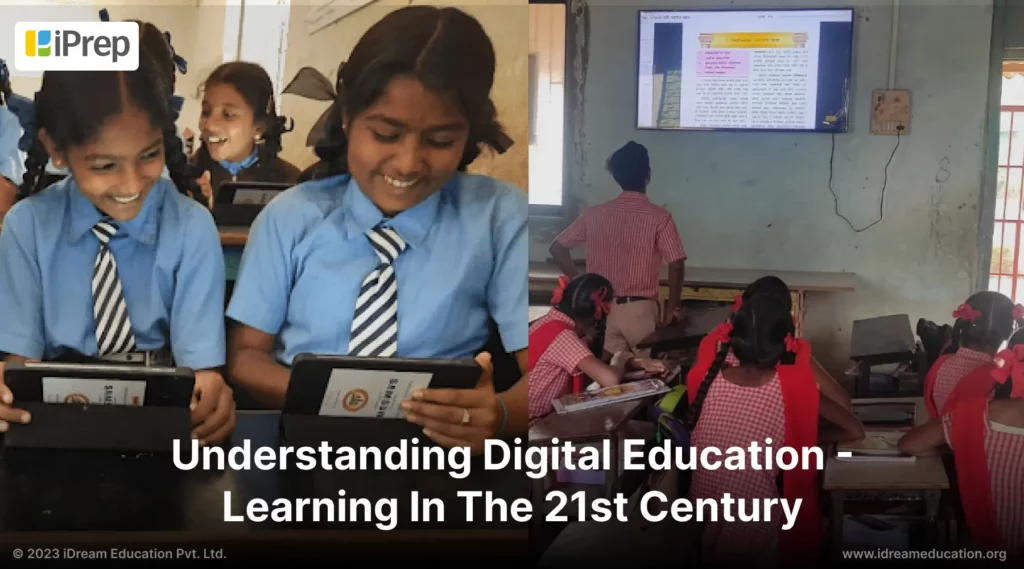
In the fast-changing India of the 21st century, digital education stands out as a revolutionary idea that could change the way people learn. Digital education very simply refers to the use of technology in education as it uses digital tools, online platforms, and interactive content to give everyone access to high-quality education, bridge geographical gaps, and raise a generation with a wide range of skills for a globally connected world.
This is made possible by the rapid spread of technology and internet connectivity. This new way of teaching and learning can change the way people learn, create more personalized learning experiences, and make India’s education system more open and flexible for its many different people.
What’s driving this?
The sole driver of this era of Digital Education is the advancement we’ve seen in Technology. It is becoming a more and more important part of schooling today. Technology is being used to make education more available, engaging, and personal.
Technology is changing education in a lot of ways, but one of the most important is that it makes education easily available to all. Online learning systems let students get to their assignments and learning materials from anywhere with an internet connection. This is very important for students who live in rural places or have trouble going to regular schools.
For places that are at the remotest corners of our country, there are solutions now in the market using which students can access the same learning content and resources that were there in the online solutions, without an internet connection, i.e. offline.
The digital era of education is undoubtedly making it more engaging and interesting for students to understand, interpret, and register the learnings more efficiently and effectively. Further, with these innovations, the scope of gaining and practicing one’s knowledge is getting wider.
This blog post will talk about the concept of Digital Education and how it is shaping learning at schools and home in the 21st century.
Just to be clear and to ensure that we are all on the same page, let’s first define Digital Education
What is digital education?
Digital education is the incorporation and use of various digital technologies and tools in the educational environment to improve the learning experience and outcomes. It employs digital devices, software applications, and interactive content to facilitate the instructing and learning process. This strategy utilizes the capabilities of digital tools to make learning more engaging, individualized, and efficient.
Digital Education predominantly entails the use of smart classrooms, tablet-based digital libraries, learning tablets, and mobile applications related to education. The purpose of these tools is to provide students with access to a vast assortment of educational resources, interactive content, and activities that go beyond traditional textbooks and classroom instruction.
But where did this concept of digital education emerge from? It is all an outcome of the digital revolution we have witnessed in the 21st century. How is that? Let’s unfold that going further in this blog post.
The Digital Revolution and Its Impact on Education
In the dynamic environment of the twenty-first century, the convergence of technology and education has given birth to the phenomenon known as Digital Education. This paradigm shift represents a departure from traditional teaching methods in preference for a novel approach that capitalizes on the power of digital tools and technologies. Let’s investigate the profound impact that the digital revolution has had on education and how it has changed the way we teach and learn.
Creatively Fostering Learning
The digital revolution has ushered in a new era of educational innovation, transforming traditional classrooms into dynamic, interactive learning environments. The core of this transformation is the seamless integration of digital devices, software applications, and interactive content. These digital tools exceed the limitations of traditional instruction by offering students a more engaging, personalized, and effective learning experience. Digital Education brings learning materials to life by rendering them into interactive experiences that capture students’ attention and promote deeper comprehension. All that while it is simultaneously recording everything in real-time.
The Power of Smart Classrooms Unlocked
Smart classrooms, which have supplemented traditional chalkboards with interactive flat panels, digital whiteboards, or smart TVs loaded with textbooks and multimedia-rich content, are at the forefront of the digital education revolution. Through engaging real-life connection animations, practice with instant feedback, notes, and assessments these technological marvels allow teachers to bring complex concepts to life.
Similarly, iPrep Digital Class comes with a rich and comprehensive collection of digital learning content and holistic growth content for students to learn and grow unlimited. The best part is that the content runs completely offline and comes with a real-time usage monitoring system that gives us classroom-wise usage reports for a data-driven approach to teaching and learning.
The real-time engagement of students in these immersive environments promotes a deeper understanding of subjects, transforming classroom teaching and learning into an active and collaborative endeavor.
The use of Digital Libraries in schools
The digital revolution has also given rise to digital libraries or ICT Labs based on computers, laptops, tablets, or other similar devices like Android Notebooks, Chromebooks, or Primebooks, that offer students a vast repository of educational resources. These devices are loaded with digital content like multimedia, textbooks, assessments, etc. that are suited to a variety of learning styles. At the same time, these are easy to set up, maintain, and use.
A perfect example of what we just mentioned is the iPrep Digital Library which is a tablet-based smart ICT Lab solution with digital learning content for classes 1st to 12th all subjects. The devices are a rich and comprehensive collection of digital learning content and holistic growth content for students to learn and grow unlimited. The best part is that these come with a real-time usage monitoring system that gives us student-wise usage reports for a data-driven approach to learning in classrooms.
Based on various research, the concept of ICT in education has been linked to an improvement in people’s lives by improving teaching and learning outcomes. And with tablet-based smart ICT labs, we take the experience of ICT to another level.
This approach can result in improved and personalized learning experiences for students, enhanced access to educational resources, streamlined classroom management, and data-driven insights to optimize their learning outcomes.
Personalizing the Educational Process
Personalization of learning requirements is arguably the most important aspect of digital education. Teachers with the help of the new-age digital learning solutions can personalize learning paths with the aid of digital tools, adapting content and pace to meet the needs, learning capabilities, learning levels, and interests of each student. This individualized approach guarantees that no student falls behind, fostering a sense of accomplishment and motivation.
A similar approach can be found in a Personalised adaptive learning solution called the iPrep PAL which is an enjoyable & personalized adaptive learning solution on tablets, notebooks, and mobile for classes 3rd to 12th all subjects in both English and Hindi medium.
It offers diagnostic tests for all chapters followed by a personalized learning path for every student based on their current learning levels. A combination of Practice Questions with feedback and remedial video content guides the students to cover their historical learning gaps and master every topic to achieve grade-level learning outcomes.
The integration of digital solutions into education in this manner, enabling personalized learning paths based on individual learning levels, capabilities, and interests, can lead to enhanced student engagement, better academic outcomes, and a greater sense of achievement.
Benefits of Digital Education in the 21st Century
There are several benefits of digital education in the 21st century, let us give you the 7 most prominent ones
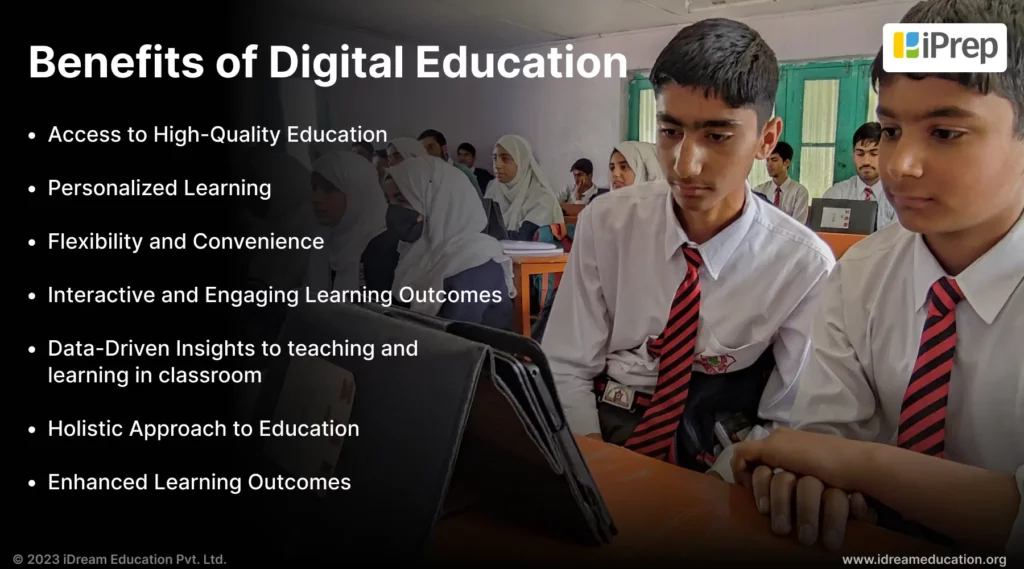
Benefit 1: Access to high-quality learning resources
Through technology, online platforms, and interactive content, digital education provides access to high-quality educational resources. Particularly benefited are people living in remote or underserved areas without access to traditional educational institutions. Students can gain access to up-to-date resources and learn at their own pace and according to their own learning level, style, and pace without breaking a sweat.
This access is exactly what we aim to spread with our digital learning solutions equipped with the one-stop learning platform iPrep.
Benefit 2: Personalized Learning
A key benefit of digital education is its ability to personalize learning. Adaptable digital tools can accommodate individual learning styles, paces, and preferences. The result is students progress at their own pace, focusing on areas they find challenging, and receiving content that is tailored to their specific needs, resulting in improved comprehension and retention.
The personalized adaptive learning solution called iPrep PAL seamlessly creates personalized and tailored learning paths for students based on their current learning levels and understanding of the chapters and subjects. That helps students overcome the areas they find challenging by adaptively eradicating their historical learning gaps over all subjects and chapters.
Benefit 3: Flexibility and Convenience
The benefits of digital education include flexibility and convenience. With an internet connection, students can access learning materials and resources at any time and from anywhere. This flexibility is especially valuable for students with busy schedules, or those who prefer learning at their own pace.
iPrep’s digital learning solutions go one step ahead in providing flexibility and convenience. The learning tablets solution called iPrep Tablets comes with an entire set of rich and comprehensive learning content and holistic development content present on the iPrep Platform preloaded on the tablets with the help of SD cards. That allows students to access the entire curriculum without the need of an internet connection making it much more convenient and flexible.
Benefit 4: Interactive and Engaging Learning Outcomes
Learners are more engaged and interactive when they use digital tools. Students can grasp complex concepts more easily through interactive lessons, animations, MCQ-based practice, and multimedia elements. In addition to increasing motivation and participation, such a dynamic learning environment can lead to a deeper understanding of the subject matter.
The learning platform “iPrep” is filled with highly interactive and engaging learning resources including Animated video lessons, MCq-based practice with instant feedback, Syllabus books, class notes for easy revision, a Rich collection of digital books in the books library, lab practicals; videos, and Interactive lessons with DIY activities and life lessons. Altogether, it makes the learning outcomes more engaging and interactive.
Benefit 5: Data-Driven Insights Of Teaching and Learning
Data on student performance, progress, and engagement is often collected by digital education platforms. Individual and class performance can be analyzed using this data. That makes it possible for teachers and Teachers to identify areas for improvement, learning gaps, and areas of strength. With this data-driven approach, it is possible to make more informed instructional decisions and to develop targeted interventions that support student learning.
Each of iPrep’s digital learning solutions, whether it is a smart class, digital library, learning tablet, learning app, or PAL app, comes with a real-time progress-tracking feature. It tracks the usage of the learning platform iPrep at every point of interaction and one can very easily access these usage reports within the My Reports section. These usage reports automatically sync to our central reporting dashboard called the iPrep Reporting Dashboard once the devices are connected to the internet. Making remote access to the usage reports seamlessly possible.
Benefit 6: Holistic Approach To Education
Digital education facilitates a holistic approach to learning by providing a vast array of resources beyond traditional textbooks. It incorporates a variety of learning resources, including multimedia content, interactive lessons, videos, and real-time assessments. This multifaceted approach caters to the diverse strengths and preferences of individual students by addressing various learning styles and intelligences.
As a result, students can develop a well-rounded comprehension of subjects while also cultivating creativity, critical thinking, problem-solving skills, and application of knowledge in the real world. This comprehensive approach prepares students for the complexities of the contemporary world, where multidimensional skills are crucial for success.
This holistic approach is also present in each of iPrep’s digital Education-related solutions. We firmly believe that taking care of the learning part is not enough for students’ individual betterment and growth. Therefore, together with iPrep’s digital learning content, we also provide holistic growth content including a rich book library with books on personal growth, stories & picture books, inspiring biographies, and interactive lessons for holistic learning and growth.
We have seen great results out of this just like the story of Nisha, a girl who loves to read books and was able to pursue her passion for reading with the Books library. Also, a girl named Meenal from Himachal Pradesh got the 1st prize in District level science exhibition as she made working models by watching the DIY project videos that are a part of the Interactive lessons on iPrep.
Benefit 7: Enhanced Learning Outcomes
Last but one of the most obvious outcomes of Digital Education is Enhanced Learning Outcomes. Digital education has the potential to significantly improve the learning outcomes of students. With the aid of digital tools, teachers can create and employ innovative teaching strategies that resonate with the tech-savvy students of today. Not only do interactive content, animations, and real-time assessments captivate students’ attention, but they also promote active participation and deeper comprehension.
The ability to track progress, identify areas for refinement, and provide timely feedback contributes further to enhanced learning outcomes. As students engage more profoundly with the content and develop a stronger grasp of concepts, their overall academic performance and retention of knowledge are likely to improve, fostering a culture of continuous learning and growth.
iPrep’s Digital Learning solutions are well-equipped to deliver enhanced learning outcomes in both schools and at home. The usage reports we receive on the iPrep reporting dashboard from thousands of schools in 20 different states of our country evidently show how our solutions have helped both teaching and learning go beyond the normal and achieve great heights.
In short, Digital Education can be highly beneficial for both teachers and students as a whole there are also some challenges and limitations that come with the idea of implementing Digital Learning Solutions across our nation India. Let’s together explore those challenges and see what can be done to overcome them
Challenges for Implementing Digital Education
Challenge 1: Connectivity Gap
There are still significant disparities in internet connectivity and access to technology, despite the potential for digital education to reach remote and underserved areas. Numerous students and schools, particularly in rural and economically disadvantaged areas, lack dependable internet access for digital education. For some places, even mobile connectivity signals are unseen privileges.
But we can eradicate this challenge. As we mentioned earlier, iPrep’s digital learning solutions work seamlessly without an internet connection which very well takes away the sheer requirement of an internet connection for students to access high-quality learning resources.
Challenge 2: The Infrastructural Reliability of Technology
Digital education relies extensively on technological infrastructure, such as stable Internet connections and functional devices. However, technical errors, connectivity problems, power disruptions, and hardware limitations can impede the learning process and frustrate both students and teachers.
Inadequate infrastructure can undermine the efficacy of digital education initiatives, causing learning interruptions and impeding the delivery of educational content in a seamless manner.
This challenge too is quite easy to overcome when our digital learning solutions come into play. As we already mentioned, iPrep’s digital learning solutions do not require an internet connection, technical errors, inadequate infrastructure, and power disruptions are also the issues we take care of with our solutions. How? Let’s have a look-
- Technical Errors: We have a dedicated customer support team to take care of and resolve all the technical and other errors that our users may face while using our digital learning solutions either remotely or by visiting the location of implementation.
- Inadequate infrastructure- Our digital learning solutions are so easy to implement that inadequate infrastructure is never a barrier, So much so that we have also implemented our solutions even in Tin Shed schools.
- Power disruptions: The digital library solution called the iPrep Digital Library comes with a charging trolley that charges the entire set of tablets with just one single source and once changed these devices run for at least 8 to 10 hours which is equal to a school’s timing. This further ensures that no power disruptions can take away the joy of Digital learning and growth from students at school.
Challenge 3: Teacher Training and Digital Literacy
Integrating digital tools and platforms into education necessitates that Teachers have a solid foundation in digital literacy and the skills necessary to utilize these tools effectively. Many Teachers may lack the necessary training to optimally utilize technology in the classroom.
Inadequate teacher training and digital literacy may result in suboptimal use of digital tools, thereby limiting the potential for interactive and engaging learning experiences. Teachers may struggle to adapt their teaching methods to the digital environment in the absence of appropriate guidance.
This is why with each of iPrep’s classroom-based Digital Education solutions including iPrep Digital Class for Smart Classes and iPrep Digital Library for Tablet-based smart ICT Labs, we give thorough and in-depth training to the teachers on the usage of these solutions at the time we implement these solutions in their schools. These trainings ensure that teachers have a complete and thorough idea of how to use these solutions to best deliver the expected teaching and learning outcomes. We also convey that our dedicated support team is always there to help them if they ever encounter an issue while using iPrep’s solutions.
Challenge 4: Privacy and Safety Issues
Digital education necessitates the accumulation and sharing of student data via online platforms and applications. This raises concerns regarding data privacy, security vulnerabilities, and the misuse of personal information, especially in the case of younger learners.
Privacy and security concerns can erode confidence in digital education platforms and hinder their adoption. To ensure the ethical use of technology in education, it is essential to strike a balance between providing personalized learning experiences and safeguarding sensitive data.
This is why we ensure that iPrep’s digital education-related solutions and our learning platform are completely safe and secure for teachers and students to use in schools or at home. How? We incorporate the following practices to make that happen-
- Encryption & Secure Data Transmission
- Regular Security Audits
- Penetration Testing
- Multi-Factor Authentication (MFA
- Data Backup and Disaster Recovery
With this, we ensure that no user or facilitator has to ever be concerned about their privacy and security when using or implementing iPrep’s digital education-related solutions.
Challenge 5: Quality Assurance and Content Curation
The digital landscape offers an abundance of educational content and resources, but it can be difficult to ensure their quality, accuracy, and relevance. With the proliferation of online platforms and content, it may be difficult for educators and students to differentiate between credible sources and misinformation or low-quality materials.
Without appropriate content curation and quality assurance mechanisms, students may encounter erroneous information or inferior educational content. This can impede effective learning outcomes and diminish the credibility of digital education initiatives. It is essential for successful digital learning experiences that educators have access to high-quality, current, and contextually relevant resources.
To overcome this challenge of implementing digital education, we realized the significance of a strong Quality Control and Content Curation team to uphold the standards of iPrep’s digital learning solutions. We’re committed to iPrep’s digital learning resources and iPrep platform. Our Quality Control team carefully checks instructional information from many sources for correctness, reliability, and alignment with curriculums and educational goals.
Additionally, our Content Curation team carefully picks accurate, interesting, engaging, and pedagogically effective resources. We actively filter misinformation and poor content using expert inspection. This ensures that iPrep’s digital learning solutions’ material is authentic and relevant for both teachers and students. We are committed to providing a seamless and stimulating digital learning experience that improves learning outcomes and boosts digital education’s reputation with these devoted teams.
Conclusion
To conclude in the landscape of 21st-century India, digital education has emerged as a transformative force, reshaping traditional teaching methods through technology integration. Altogether, smart classrooms and digital libraries have revolutionized learning environments, making education interactive and adaptable. Personalized learning, enabled by digital tools, ensures individual student needs are met, enhancing comprehension and motivation.
Yet, challenges persist. Uneven connectivity and technology access remain hurdles, requiring innovative solutions like offline accessibility. Teacher training, data security, and content quality assurance are crucial for ethical and effective digital education. By addressing these challenges through comprehensive solutions, such as iPrep, India can leverage the potential of digital education, empowering students for a dynamic future, while collaborative efforts ensure its sustainable impact.

